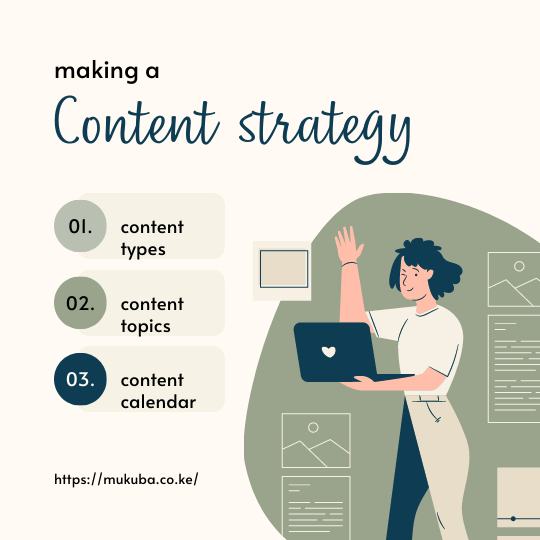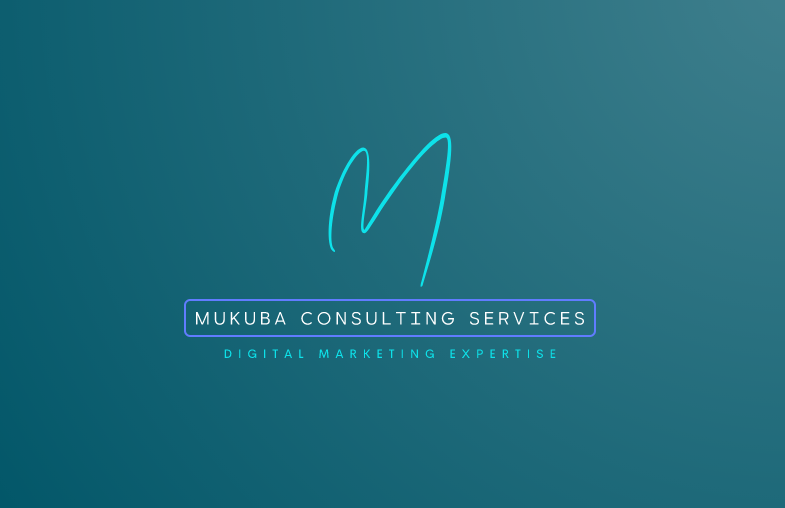As companies struggle to reach an expanding and increasingly digitally savvy population in Kenya, content marketing is more crucial than ever.
On the other hand, it can be challenging for businesses to develop a successful content marketing strategy in Kenya because of the challenging cultural and linguistic environment, while also keeping up with the most recent trends and industry best practices.
In this article, we’ll examine how to create a fruitful content marketing plan for Kenya. We’ll talk about understanding your audience, determining your target audience, doing keyword research, creating a content plan, producing high-quality content, promoting it, measuring your results, and modifying your strategy as necessary.
The importance of content marketing for businesses

Content marketing is a powerful tool for businesses of all sizes and in all sectors. It entails creating and disseminating valuable, timely, and consistent content in order to appeal to and retain a specific audience.
Some of the factors that make content marketing so crucial for businesses include the following:
Boosts brand awareness
Content marketing will help you raise brand awareness by producing and disseminating useful content that informs and entertains your target audience. By regularly producing and disseminating pertinent content, you can position your brand as an authority figure in your field and gain the audience’s trust.
Increases website traffic
Search engine-friendly content is produced as part of content marketing to increase website traffic. By including pertinent keywords and phrases in your content, you can raise the position of your website in search results and increase organic traffic to your website.
Generates leads
By producing content that is specific to your target audience’s needs and interests, content marketing generates leads. By offering your audience useful information and solutions to their problems, you can gain their trust and establish yourself as a reliable information source. This can result in more leads and conversions for your company.
Cost-effective
Content marketing is a low-cost method of reaching your target audience and achieving your business objectives. Unlike traditional advertising methods, content marketing allows you to create and distribute content that is tailored to the needs and interests of your target audience at a fraction of the cost.
Understanding Your Target Market

Understanding your audience is one of the most important aspects of developing a successful content marketing strategy.
To create content that resonates with your target audience, you must first understand who they are, their pain points, and the type of content they prefer.
We’ve compiled some pointers to help you understand your target audience:
Carry out market research
Market research is an important step in understanding your target audience. Surveys, focus groups, and social media analytics can help you learn more about your target audience’s demographics, interests, and behaviour.
Create buyer personas
Buyer personas are fictitious portrayals of your ideal customers. They assist you in better understanding your audience by outlining their goals, challenges, and pain points.
By creating detailed buyer personas, you can create content that speaks directly to the needs and interests of your target audience.
Examine the analytics of your website and social media.
Your website and social media analytics can provide useful information about your target audience’s behaviour and preferences.
This data can be used to determine which types of content resonate with your audience and which channels they prefer to consume content on.
Keep an eye on industry trends and news.
Keeping up with industry trends and news can help you better understand your target audience’s pain points and challenges. You can establish yourself as a thought leader in your industry and build trust with your audience by creating content that addresses these issues.
Engage your audience.
Engaging your audience via comments, social media, and email can provide useful feedback and insights into their preferences and pain points. You can use this data to create content that is tailored to the needs and interests of your target audience.
How to Find Your Target Market

A critical step in developing a successful content marketing strategy is identifying your target audience.
Your target audience is the demographic you want to connect with through your content and who is most likely to be interested in your goods or services.
How to determine your target market:
- Specify the nature of your product or service.
The first step in identifying your target market is to clearly define your product or service. Which issue does it deal with? What benefits does it offer? Understanding your product or service’s value proposition will help you pinpoint the individuals who are most likely to be interested in it.
- Carry out market research
Finding your target audience requires doing market research, which is a crucial step. You can find out more about your target audience’s demographics, interests, and behaviors by conducting surveys, participating in focus groups, and using social media analytics.
- Create buyer personas
Buyer personas are fictional representations of your ideal clients. They outline the objectives, difficulties, and problems of your target audience to help you better understand them. You can produce content that speaks directly to your target audience’s needs and interests by developing thorough buyer personas.
- Examine your competitors
Knowing more about your target market can be gained by analyzing your competition. To whom do they cater? Which kind of content do they create? Understanding your competition’s target audience allows you to identify market gaps and create content to fill those gaps.
- Take into account psychographics
The characteristics that define a person’s personality, values, attitudes, interests, and lifestyle are known as psychographics. You can create a more accurate picture of your target audience and create content that speaks directly to their motivations and desires by considering psychographics in addition to demographics.
Conducting Keyword Research

Any successful content marketing strategy must include keyword research. It entails determining the keywords and phrases that your target audience is using to find information about your product or service.
You can conduct effective keyword research by doing the following:
- Establish your content objectives.
It is critical to define your content goals before beginning keyword research. What topics would you like to discuss? What type of content do you want to produce? You can identify the keywords and phrases that are most relevant to your target audience by defining your content goals.
- Make use of keyword research tools
There are numerous free and paid keyword research tools available. These tools can assist you in identifying the keywords and phrases used by your target audience, as well as providing information on search volume, competition, and related keywords. Google Keyword Planner, SEMrush, and Ahrefs are three popular keyword research tools.
- Locate long-tail keywords
Long-tail keywords are more specific, longer phrases that are less competitive than broad keywords. They typically have lower search volume but are more likely to attract a highly targeted audience.
- Examine your competitors
Analysing your competitors’ keywords and phrases can provide useful insights into the keywords and phrases that are driving traffic to their website. You can identify market gaps and create content that fills them by identifying the keywords and phrases that your competitors are targeting.
- Take into account search intent
The reason for a search query is referred to as search intent. Are people looking for information, making a purchase, or finding entertainment? This allows you to create content that is relevant to your target audience and drives conversions.
Making a Content Strategy

After you’ve completed keyword research and identified your target audience, it’s time to create a content strategy.
A content plan outlines the types of content you will create, the topics you will cover, and your content’s publishing schedule.
Here are some steps to help you create a content strategy:
Establish your content types.
The first step in creating a content strategy is to identify the types of content you will produce. This could include blog posts, videos, social media posts, infographics, podcasts, and other forms of content. This will ensure that your content is varied and appealing to a diverse audience.
Establish your content topics
Following that, you must define the topics that will be covered in your content. This should be based on your keyword research and your target audience’s interests. Make a list of potential topics and categorize them to ensure that your content is well-rounded and covers a wide range of topics.
Develop a content calendar
It’s time to make a content calendar now that you’ve defined your content types and topics. This should include a schedule for publishing each type of content, as well as deadlines for creating and editing your content. A content calendar will keep you organized and ensure that your content is consistently published.
Determine the channels through which your content will be distributed.
It is critical to choose the channels through which you will distribute your content. This includes social media platforms, email newsletters, your website, and other resources. You can ensure that your content reaches your target audience where they are most likely to engage with it by determining your distribution channels.
Delegate roles and responsibilities.
Finally, assign roles and responsibilities for content creation, editing, and publication. Writers, editors, graphic designers, social media managers, and others may be included. You can ensure that everyone is on the same page and that your content is created and published on time by clearly defining roles and responsibilities.
Creating High-Quality Content

High-quality content creation is essential for any successful content marketing strategy. High-quality content not only engages and informs your target audience, but it also helps to position your brand as an industry authority. Here are some pointers for developing high-quality content:
- Conduct extensive research on your topic.
It is critical to thoroughly research your topic before creating content. Reading industry publications, conducting surveys or interviews, and analysing data are all examples of this. You can ensure that your content is accurate, relevant, and valuable to your audience by thoroughly researching your topic.
- Write in a clear and engaging style.
It is critical to use a clear and engaging writing style when creating high-quality content. Write in an understandable manner, avoiding industry jargon or technical language that may confuse your audience. Write in the active voice and in short, concise sentences that are easy to read.
- Include multimedia elements
Incorporating multimedia elements such as images, videos, and infographics into your content can help to make it more engaging and visually appealing. Use high-quality multimedia elements that are relevant to your content and provide value to your audience.
- SEO-optimize your content
Search engine optimization is critical for increasing visibility and driving traffic to your website. In your content, title, and meta description, include relevant keywords and phrases. Use descriptive filenames and alt text to optimize your images and videos.
- Proofread and edit your content
It is critical to thoroughly edit and proofread your content before publishing it. Check for spelling and grammar mistakes, and make sure your content is well organized and flows logically. Consider having someone else look at your content from a different perspective.
Increasing the Visibility of Your Content

A successful content marketing strategy begins with the creation of high-quality content. It is critical to effectively promote your content to ensure that it reaches your target audience and drives traffic to your website. Here are some recommendations for promoting your content:
- Disseminate on social media
Social media platforms like Facebook, Tiktok, and Instagram are excellent places to distribute your content and reach a larger audience. To increase visibility, share your content on each platform multiple times.
- Email marketing
Another effective way to promote your content is through email marketing. Send your subscribers newsletters or email updates with links to your most recent content. Make your emails visually appealing and personalize them.
- Outreach to influential people
Identify industry influencers and contact them to see if they would be willing to share your content with their audience. This can help to increase your website’s visibility and traffic.
- Paid promotion
Paid advertising can help you promote your content and reach a larger audience. Consider promoting your content through paid search, social media advertising, or display advertising.
- Repurpose your content
Repurposing your content into new formats, such as videos, infographics, or podcasts, can help you reach a larger audience and gain visibility. Make certain that each format is SEO-optimized and promoted on relevant platforms.
How to Measure Your Success

Measuring the success of your content marketing strategy is critical for determining what works and what needs to be improved. Here are a few key metrics to monitor:
Website traffic
This is one of the most important metrics to track. Track the number of visitors to your website, how long they stay on your site, and which pages they visit using Google Analytics or another website analytics tool.
Participation
Metrics of engagement track how users interact with your content. Social media shares, comments, and likes, as well as time spent on your website and click-through rates, are examples of these metrics.
Transformations
The ultimate goal of any content marketing strategy is conversions. Track how many users are converting and which pieces of content are driving conversions, whether it’s filling out a contact form, making a purchase, or subscribing to a newsletter.
ROI Return on investment (ROI)
ROI calculates the monetary value of your content marketing efforts. This can include both revenue generated by content and cost savings from organic traffic versus paid advertising.
Modifying your strategy
Adjust your content marketing strategy as needed based on your data. Determine which pieces of content are working well and which need to be improved, and then adjust your strategy accordingly.
Conclusion
Developing a content marketing strategy that works in Kenya necessitates a thorough understanding of your target audience, goals, and keywords. It also entails creating high-quality content, effectively promoting it, and measuring your results. By following these steps, you can develop a content marketing strategy that will aid your company’s online success.




[…] a result, brands must adapt their content strategies to effectively engage with their target audience and stay relevant in the ever-evolving digital […]
[…] or content marketing is one of the sure ways to grow your website. Producing helpful and entertaining content […]
[…] Content Strategy […]
[…] varied, helpful original content others want to […]